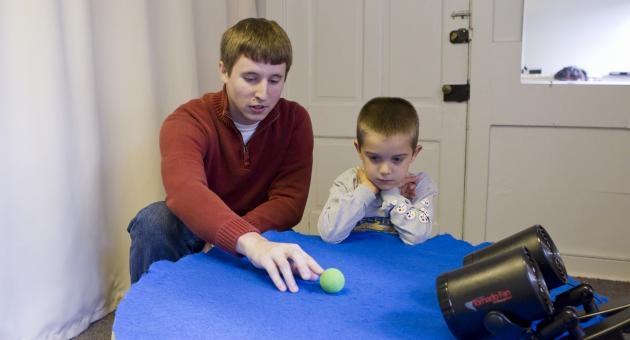Interactive play develops kids' spatial skills

Parents and researchers have long speculated that playing with construction toys might offer a rich environment that would support later learning in the science, technology, engineering and mathematics (STEM) disciplines.
In a recent study published in Mind, Brain and Education, researchers at Temple's Infant Lab found there are some very real benefits to playing with that old toy classic — blocks.
Lead author Katrina Ferrara found that when playing with blocks under interactive conditions, children hear the kind of language that helps them think about space, such as "over," "around" and "through."
"When parents use spatial language, they draw attention to spatial concepts," said Nora Newcombe, co-director of Temple's Infant Lab. "The development of a spatial vocabulary is critical for developing spatial ability and awareness."
Spatial skills are important for success in the STEM disciplines, but they are also involved in many everyday tasks, such as packing the trunk of a car or assembling a crib.
They are a central component of intellect and, as those who struggle finding their way around a new city can attest, they show marked individual differences.
"There is evidence that variations in the spatial language young children hear, which directs their attention to important aspects of the spatial environment, may be one of the mechanisms that contribute to differences in spatial ability," says Newcombe, who is also the principal investigator of the Spatial Intelligence and Learning Center (SILC), headquartered at Temple.
To investigate how play affects variations in language, investigators observed children and parents in one of three situations: in "free" play, where the subjects are encouraged to play with the blocks as they would at home; in "preassembled" play, where the subject are given blocks that have been glued together in a preformed, fixed structure; and in "guided" play, where the subjects are given the blocks along with graphic instructions for creating a particular structure.
Parents in the guided play condition produced significantly higher proportions of spatial talk than parents in the other two conditions, and children in the guided play condition produced significantly more spatial talk than those in the free play condition.
"This study gives parents news they can use. It shows that, rather than leaving kids alone with a preassembled activity, interactive play that draws out conversation is best at facilitating spatial development," Newcombe said.